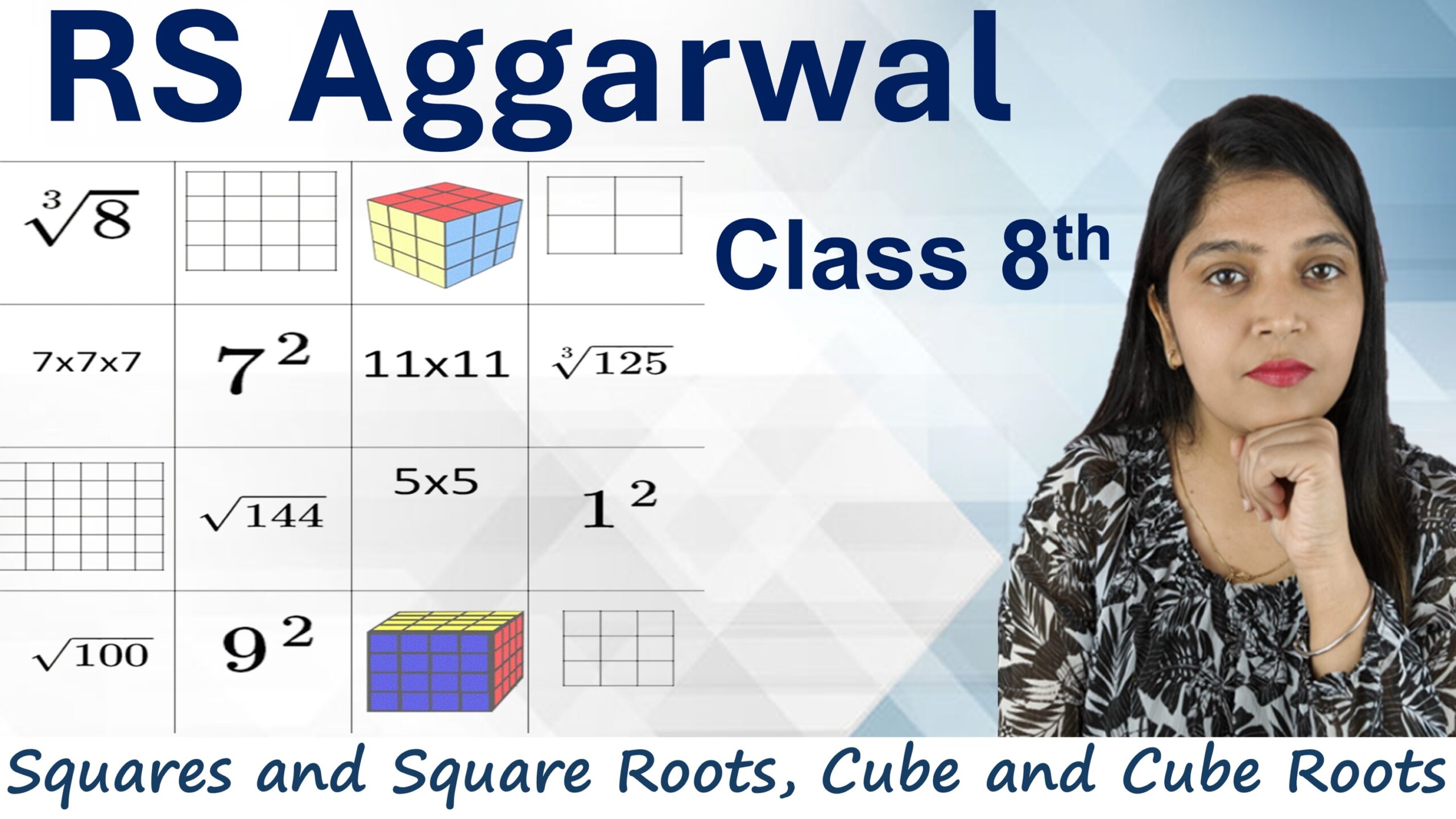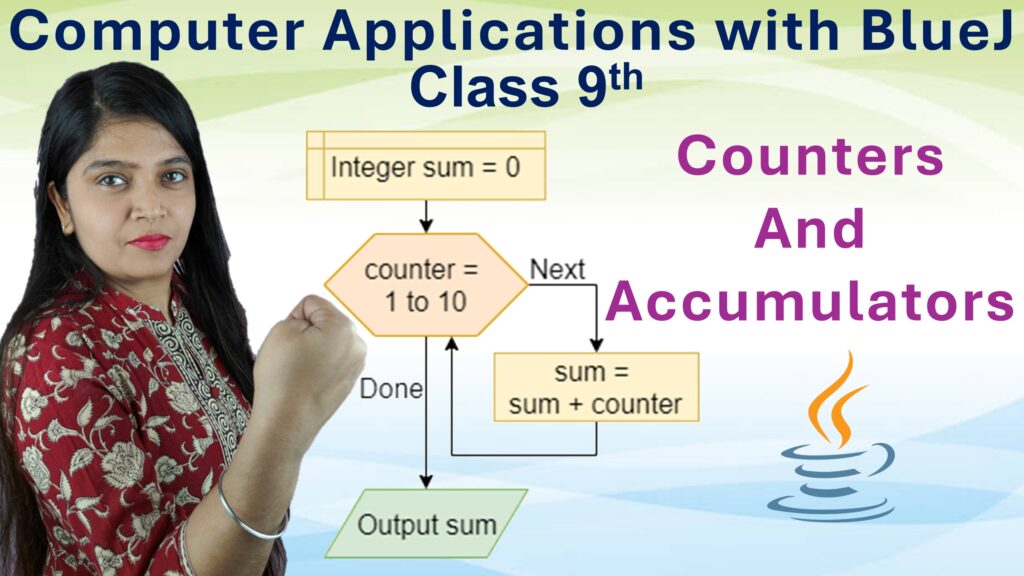Exercise: 3-A
Q1: Find the square of each of the following numbers:
i. 14
Step 1: Write in square form
⇒ 14² = 14 × 14
Step 2: Multiply
⇒ 196
Answer: 196
ii. 137
Step 1: Write in square form
⇒ 137² = 137 × 137
Step 2: Multiply
⇒ 18769
Answer: 18769
iii. \( \frac{4}{17} \)
Step 1: Write in square form
⇒ \( \left( \frac{4}{17} \right)^2 = \frac{4^2}{17^2} \)
Step 2: Square numerator and denominator
⇒ \( \frac{16}{289} \)
Answer: \( \frac{16}{289} \)
iv. \( 2\frac{3}{4} \)
Step 1: Convert mixed number to improper fraction
⇒ \( 2\frac{3}{4} = \frac{11}{4} \)
Step 2: Square the improper fraction
⇒ \( \left( \frac{11}{4} \right)^2 = \frac{11^2}{4^2} = \frac{121}{16} \)
Answer: \( \frac{121}{16} = 7\frac{9}{16} \)
v. 0.01
Step 1: Square the decimal
⇒ (0.01)² = 0.01 × 0.01 = 0.0001
Answer: 0.0001
vi. 1.2
Step 1: Square the decimal
⇒ (1.2)² = 1.2 × 1.2 = 1.44
Answer: 1.44
vii. 0.17
Step 1: Square the decimal
⇒ (0.17)² = 0.17 × 0.17 = 0.0289
Answer: 0.0289
viii. 4.6
Step 1: Square the decimal
⇒ (4.6)² = 4.6 × 4.6 = 21.16
Answer: 21.16
Q2: Using prime factorization method, find which of the following are perfect square numbers:
i. 252
Step 1: Find prime factorization
252 = 2 × 2 × 3 × 3 × 7
Step 2: Group the prime factors
(2 × 2), (3 × 3), 7
7 is not in a pair
Answer: Not a perfect square
ii. 324
Step 1: Prime factorization
324 = 2 × 2 × 3 × 3 × 3 × 3
Step 2: Group the prime factors
(2 × 2), (3 × 3), (3 × 3)
All in pairs
Answer: Perfect square
iii. 676
Step 1: Prime factorization
676 = 2 × 2 × 13 × 13
Step 2: Group the prime factors
(2 × 2), (13 × 13)
All in pairs
Answer: Perfect square
iv. 1225
Step 1: Prime factorization
1225 = 5 × 5 × 7 × 7
Step 2: Group the prime factors
(5 × 5), (7 × 7)
All in pairs
Answer: Perfect square
v. 2916
Step 1: Prime factorization
2916 = 2 × 2 × 3 × 3 × 3 × 3 × 3 × 3
Step 2: Group the prime factors
(2 × 2), (3 × 3), (3 × 3), (3 × 3)
All in pairs
Answer: Perfect square
vi. 3528
Step 1: Prime factorization
3528 = 2 × 2 × 2 × 3 × 3 × 7 × 7
Step 2: Group the prime factors
(2 × 2), 2 (unpaired), (3 × 3), (7 × 7)
One 2 is unpaired
Answer: Not a perfect square
vii. 5625
Step 1: Prime factorization
5625 = 3 × 3 × 5 × 5 × 5 × 5
Step 2: Group the prime factors
(3 × 3), (5 × 5), (5 × 5)
All in pairs
Answer: Perfect square
viii. 9075
Step 1: Prime factorization
9075 = 3 × 3 × 5 × 5 × 11 × 11 × 3
Step 2: Group the prime factors
(3 × 3), (5 × 5), (11 × 11), extra 3 (unpaired)
One 3 is unpaired
Answer: Not a perfect square
Q3: Show that each of the following numbers is a perfect square. Also, find the square root of each:
i. 441
Step 1: Prime factorization
441 = 3 × 3 × 7 × 7
Step 2: All prime factors are in pairs
(3 × 3), (7 × 7)
Step 3: Square root = 3 × 7 = 21
Answer: Perfect square; √441 = 21
ii. 784
Step 1: Prime factorization
784 = 2 × 2 × 2 × 2 × 7 × 7
Step 2: All in pairs
(2 × 2), (2 × 2), (7 × 7)
Step 3: Square root = 2 × 2 × 7 = 28
Answer: Perfect square; √784 = 28
iii. 1225
Step 1: Prime factorization
1225 = 5 × 5 × 7 × 7
Step 2: All in pairs
(5 × 5), (7 × 7)
Step 3: Square root = 5 × 7 = 35
Answer: Perfect square; √1225 = 35
iv. 3969
Step 1: Prime factorization
3969 = 3 × 3 × 3 × 3 × 7 × 7
Step 2: All in pairs
(3 × 3), (3 × 3), (7 × 7)
Step 3: Square root = 3 × 3 × 7 = 63
Answer: Perfect square; √3969 = 63
v. 2601
Step 1: Prime factorization
2601 = 3 × 3 × 17 × 17
Step 2: All in pairs
(3 × 3), (17 × 17)
Step 3: Square root = 3 × 17 = 51
Answer: Perfect square; √2601 = 51
vi. 5929
Step 1: Prime factorization
5929 = 7 × 7 × 11 × 11
Step 2: All in pairs
(7 × 7), (11 × 11)
Step 3: Square root = 7 × 11 = 77
Answer: Perfect square; √5929 = 77
vii. 7056
Step 1: Prime factorization
7056 = 2 × 2 × 2 × 2 × 3 × 3 × 7 × 7
Step 2: All in pairs
(2 × 2), (2 × 2), (3 × 3), (7 × 7)
Step 3: Square root = 2 × 2 × 3 × 7 = 84
Answer: Perfect square; √7056 = 84
viii. 8281
Step 1: Prime factorization
8281 = 7 × 7 × 13 × 13
Step 2: All in pairs
(7 × 7), (13 × 13)
Step 3: Square root = 7 × 13 = 91
Answer: Perfect square; √8281 = 91
Q4: Find the smallest number by which each of the following numbers must be multiplied to get a perfect square number. Also, find the square root of the resulting number:
i. 588
Step 1: Prime factorization
588 = 2 × 2 × 3 × 7 × 7
Step 2: Group the pairs
(2 × 2), (7 × 7), 3 (unpaired)
Step 3: Multiply by unpaired factor to make all pairs
⇒ Multiply by 3
Step 4: New number = 588 × 3 = 1764
Step 5: √1764 = √(2² × 3² × 7²) = 2 × 3 × 7 = 42
Answer: Multiply by 3; √1764 = 42
ii. 2592
Step 1: Prime factorization
2592 = 2⁵ × 3⁴ = 2 × 2 × 2 × 2 × 2 × 3 × 3 × 3 × 3
Step 2: Group the pairs
(2 × 2), (2 × 2), 2 (unpaired), (3 × 3), (3 × 3)
Step 3: Multiply by 2 to make all 2s in pairs
⇒ New number = 2592 × 2 = 5184
Step 4: √5184 = √(2⁶ × 3⁴) = 2³ × 3² = 8 × 9 = 72
Answer: Multiply by 2; √5184 = 72
iii. 3332
Step 1: Prime factorization
3332 = 2 × 2 × 7 × 7 × 17
Step 2: 17 is a prime (not in pair)
Step 3: Multiply by 833 to make a pair
⇒ New number = 3332 × 17 = 56664
Step 4: √56664 = √(2² × 7² × 17²) = 2 × 7 × 17 = 238
Answer: Multiply by 17; √56664 = 238
iv. 3380
Step 1: Prime factorization
3380 = 2² × 5 × 13 × 13
Step 2: Pairs: (2 × 2), (13 × 13); 5 is unpaired
Step 3: Multiply by 5 to make it a pair
⇒ New number = 3380 × 5 = 16900
Step 4: √16900 = √(2² × 5² × 13²) = 2 × 5 × 13 = 130
Answer: Multiply by 5; √16900 = 130
Q5: By which least number should the given number be divided to obtain a perfect square number? Also, find the resulting perfect square number and its square root:
i. 1728
Step 1: Prime factorization
1728 = 2⁶ × 3³
Step 2: Remove the unpaired factor (3) to make all pairs
⇒ Divide by 3
Step 3: New number = 1728 ÷ 3 = 576
Step 4: √576 = √(2⁶ × 3²) = 2³ × 3 = 8 × 3 = 24
Answer: Divide by 3; Perfect square = 576; √576 = 24
ii. 4500
Step 1: Prime factorization
4500 = 2² × 3² × 5³
Step 2: 5³ has one unpaired 5
⇒ Divide by 5
Step 3: New number = 4500 ÷ 5 = 900
Step 4: √900 = √(2² × 3² × 5²) = 2 × 3 × 5 = 30
Answer: Divide by 5; Perfect square = 900; √900 = 30
iii. 7776
Step 1: Prime factorization
7776 = 2⁵ × 3⁵
Step 2: Both 2 and 3 have one unpaired factor
⇒ Divide by 2 × 3 = 6
Step 3: New number = 7776 ÷ 6 = 1296
Step 4: √1296 = √(2⁴ × 3⁴) = 2² × 3² = 4 × 9 = 36
Answer: Divide by 6; Perfect square = 1296; √1296 = 36
iv. 8820
Step 1: Prime factorization
8820 = 2² × 3² × 5 × 7²
Step 2: 5 is unpaired
⇒ Divide by 5
Step 3: New number = 8820 ÷ 5 = 1764
Step 4: √1764 = √(2² × 3² × 7²) = 2 × 3 × 7 = 42
Answer: Divide by 5; Perfect square = 1764; √1764 = 42
Q6: The students of a class arranged a picnic. Each student contributed as many rupees as the number of students in the class. If the total contribution is ₹1156, find the strength of the class.
Let the number of students in the class be x.
Step 1: According to the question:
Each student contributes ₹x and there are x students.
So,
Total contribution = x × x = x²
⇒ x² = 1156
Step 2: Find the square root of 1156
Check prime factorization of 1156:
1156 = 2 × 2 × 17 × 17 = (2 × 17)² = 34²
Step 3: Take square root on both sides
x = √1156 = 34
Answer: The strength of the class is 34 students.
Q7: In an auditorium, the number of rows is equal to the number of chairs in each row. If the capacity of the auditorium is 2025, find the number of chairs in each row.
Let the number of rows = number of chairs in each row = x
Step 1: Total capacity = Number of rows × Number of chairs per row
⇒ x × x = x²
Given: x² = 2025
Step 2: Find the square root of 2025 using prime factorization:
2025 = 5 × 5 × 3 × 3 × 3 × 3 = (5 × 3 × 3)² = (45)²
Step 3: Take square root on both sides
x = √2025 = 45
Answer: The number of chairs in each row is 45.
Q8: Find the least square number which is exactly divisible by each of the numbers 8, 9, 10, and 15.
Step 1: Find the prime factorization of each number:
– 8 = 2³
– 9 = 3²
– 10 = 2 × 5
– 15 = 3 × 5
Step 2: Find the LCM of 8, 9, 10, and 15 by taking the highest powers of each prime factor:
– The highest power of 2 is 2³ (from 8)
– The highest power of 3 is 3² (from 9)
– The highest power of 5 is 5¹ (from 10 and 15)
Thus, the LCM = 2³ × 3² × 5¹ = 8 × 9 × 5 = 360
Step 3: To make the LCM a perfect square, we need to ensure that each prime factor has an even exponent:
– The exponent of 2 is 3 (odd), so multiply by 2¹ to make it 2⁴
– The exponent of 3 is 2 (even), so no need to change it
– The exponent of 5 is 1 (odd), so multiply by 5¹ to make it 5²
Thus, the least square number = LCM × 2 × 5 = 360 × 10 = 3600
Step 4: Verify that 3600 is divisible by 8, 9, 10, and 15:
– 3600 ÷ 8 = 450
– 3600 ÷ 9 = 400
– 3600 ÷ 10 = 360
– 3600 ÷ 15 = 240
All divisions are exact.
Step 5: Find the square root of 3600:
√3600 = 60
Answer: The least square number is 3600, and its square root is 60.







Leave a Comment